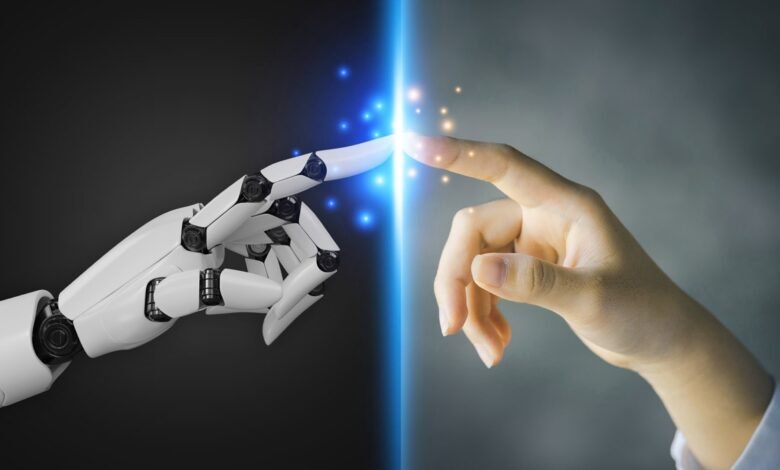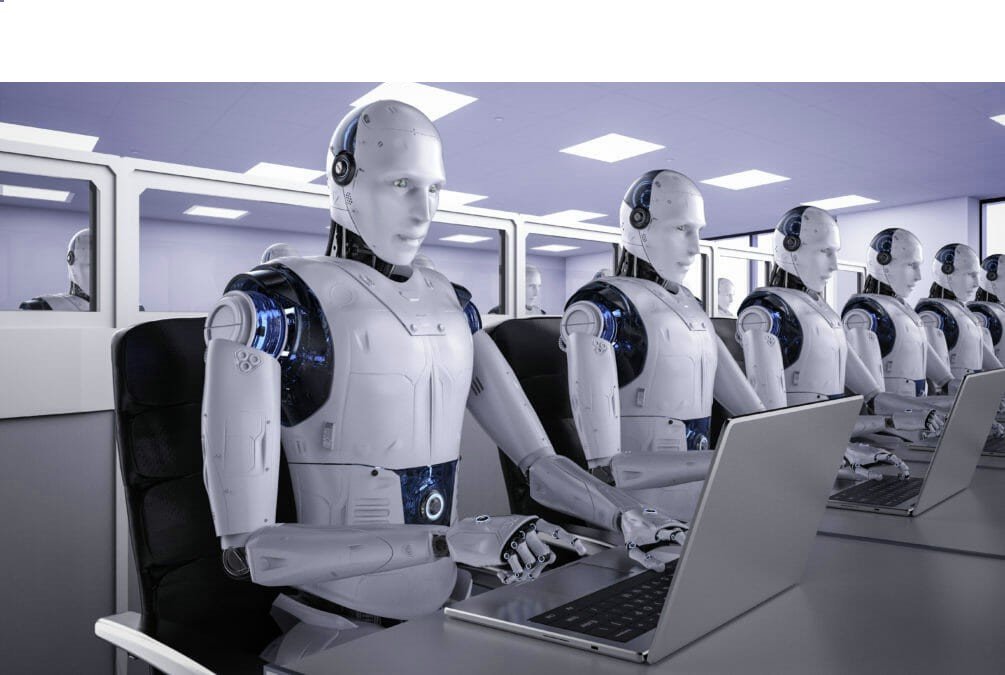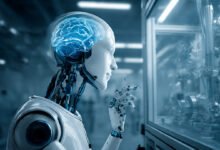AI Robots vs Human Working Comparison

AI Robots vs Human Working have become key players in today’s rapidly evolving technological landscape. As artificial intelligence continues to advance, the comparison between AI robots and human workers has become a topic of great interest. In this article, we will explore the advantages and limitations of both AI robots vs human working, their potential for collaboration, the industries affected by their presence, and the future implications of their coexistence.
Artificial intelligence robots, often referred to as AI robots or simply robots, are machines designed to perform tasks autonomously or with minimal human intervention. They are built with the capability to process data, learn from it, and make decisions based on that knowledge. On the other hand, human workers bring a unique set of skills, experiences, and emotional intelligence to their work.
Read more: Top 13 IoT Trends Shaping the Future of Technology in 2023
Advantages of AI Robots
Efficiency and Productivity
One of the key advantages of AI robots is their ability to perform repetitive tasks with great efficiency and productivity. Unlike humans, robots do not tire or get distracted, allowing them to work continuously and consistently. This can lead to increased output and reduced operational costs in industries such as manufacturing and logistics.
Consistency and Accuracy
AI robots are known for their high level of precision and accuracy. Once programmed, they can consistently perform tasks with minimal variation or errors. In industries where precision is critical, such as medical diagnostics or assembly lines, robots can deliver results that are consistently reliable.
Reduction of Human Error
Human error is an inevitable part of any task performed by humans. AI robots, however, can minimize the impact of human error through their programmed algorithms and strict adherence to predefined rules. This is particularly beneficial in industries that require high levels of accuracy and safety, such as aerospace or nuclear power plants.
Adaptability and Creativity
Human workers possess an unparalleled level of adaptability and creativity. They can quickly learn new skills, adapt to changing circumstances, and find innovative solutions to complex problems. These qualities make human workers highly valuable in industries that require critical thinking and creativity, such as marketing or research and development.
Emotional Intelligence and Empathy
AI robots lack the emotional intelligence and empathy that human workers naturally possess. Human workers can understand and respond to the emotional needs of customers, colleagues, or patients in a way that AI robots cannot. Industries that heavily rely on human interaction, such as customer service or counseling, greatly benefit from the empathetic nature of human workers.
Complex Problem-Solving Abilities
AI robots excel at performing tasks that are rule-based and well-defined. However, when it comes to solving complex problems that require intuition, creativity, and contextual understanding, human workers have the upper hand. Human workers can analyze situations from multiple perspectives and come up with innovative solutions that may not be evident to AI robots.
Limitations of AI Robots
Lack of Human-Like Intuition

AI robots, despite their advanced capabilities, lack the human-like intuition that is crucial for understanding complex social interactions or making ethical decisions. They operate based on algorithms and data analysis, which can limit their ability to understand the nuances of human behavior or respond appropriately in ambiguous situations.
Limited Capability for Creativity
While AI robots can perform tasks efficiently, they struggle with creativity and originality. They rely on existing data and patterns to make decisions, which can limit their ability to come up with novel ideas or solutions. This limitation makes human workers indispensable in industries that require innovation and thinking outside the box.
Ethical Considerations and Potential Job Displacement
The rapid advancement of AI robots vs human working raises ethical concerns and the potential displacement of human workers. As robots become more capable, there is a risk of job loss in certain industries. Ethical questions arise regarding the impact on employment, income inequality, and the overall well-being of society. Striking a balance between technological progress and social responsibility is crucial.
Limitations of Human Workers
Physical Limitations
Human workers have physical limitations that can hinder their performance in certain industries. They may lack the strength, endurance, or precision required for physically demanding tasks. In such cases, AI robots can be employed to enhance productivity and reduce the risk of injuries.
Cognitive Biases and Limitations
Human cognition is prone to biases, cognitive limitations, and subjective judgments. These factors can introduce errors and inconsistencies into decision-making processes. AI Robots vs Human Working, on the other hand, can provide unbiased and data-driven insights, mitigating the potential impact of human cognitive limitations.
Cost and Scalability Issues
Human labor can be expensive, especially in industries with high labor requirements. Additionally, scaling human workforce to meet increased demands can be challenging and time-consuming. AI robots offer scalability and cost-efficiency, as they can be replicated and deployed at scale with relatively lower costs once the initial investment is made.
Collaboration between AI Robots and Human Workers
The true potential lies in the collaboration between AI robots and human workers. By combining the strengths of both, organizations can achieve unprecedented results. AI robots can assist human workers in tasks that require high accuracy or data processing, while human workers can leverage their creativity, critical thinking, and emotional intelligence to add value to AI Robots vs Human Working AI-driven processes.
Finding the right balance between AI robots and human workers is essential. Organizations need to identify tasks that are best suited for AI automation and those that require human expertise. This collaboration can lead to increased productivity, improved decision-making, and enhanced customer experiences across various industries.
Industries and Fields Affected by AI Robots
The presence of AI robots is being felt in various industries, transforming the way work is performed. In the manufacturing and automation sector, robots have revolutionized production lines, increasing efficiency and reducing human error. In healthcare, AI robots are assisting with medical diagnostics, surgery, and patient care, improving accuracy and outcomes. Customer service and support industries are leveraging AI chatbots and virtual assistants to provide instant and personalized assistance to customers.

The Future of AI Robots vs Human Working
The future of AI robots and human workers is intertwined. While concerns about job displacement exist, the rise of AI robots also opens up new opportunities for human workers. As certain tasks become automated, the focus will shift to reskilling and upskilling human workers for more complex and creative roles that require emotional intelligence, problem-solving abilities, and critical thinking. Education systems and workforce development programs will play a crucial role in preparing individuals for this future.
The coexistence of AI robots and human workers will shape our society in various ways. It will require ethical considerations, policy frameworks, and social adaptations to ensure a fair and inclusive transition. Ultimately, successful integration of AI robots and human workers will lead to increased efficiency, improved innovation, and a more prosperous society as a whole.
Read more: Tap into Your Inner Kid with This Robot Building Kit
Conclusion
In conclusion, the comparison between AI robots and human workers is not about superiority but about harnessing the unique strengths of each. AI Robots vs Human Working offer efficiency, precision, and scalability, while human workers bring adaptability, creativity, and emotional intelligence. Collaboration between the two can lead to remarkable outcomes across industries. As we navigate the future, finding the right balance between AI robots vs human working will be crucial to maximize their collective potential and create a harmonious working environment.
Read more: Tap into Your Inner Kid with This Robot Building Kit
FAQs
Can AI robots completely replace human workers?
While AI robots can automate certain tasks, complete replacement of human workers is unlikely. The collaboration between AI robots and human workers is more promising, as each brings unique qualities to the table.
What are the potential risks associated with the widespread use of AI robots?
Risks include job displacement, ethical considerations, and the need for reskillingz workers. It is important to address these challenges to ensure a smooth transition and avoid societal inequalities.
How can human workers prepare for the increasing presence of AI robots?
Human workers can focus on developing skills that complement AI automation, such as creativity, critical thinking, emotional intelligence, and complex problem-solving. Lifelong learning and adaptability will be crucial.
Are there any industries where human workers will always be preferred over AI robots?
Industries that require creativity, empathy, and complex problem-solving will likely continue to rely on human workers. These include fields like art, design, counseling, and research.
Will AI robots lead to unemployment on a large scale?
While job displacement is a concern, the rise of AI robots alo creates new job opportunities. It is important to focus on reskilling and upskilling the workforce to adapt to the changing demands of the job market.











